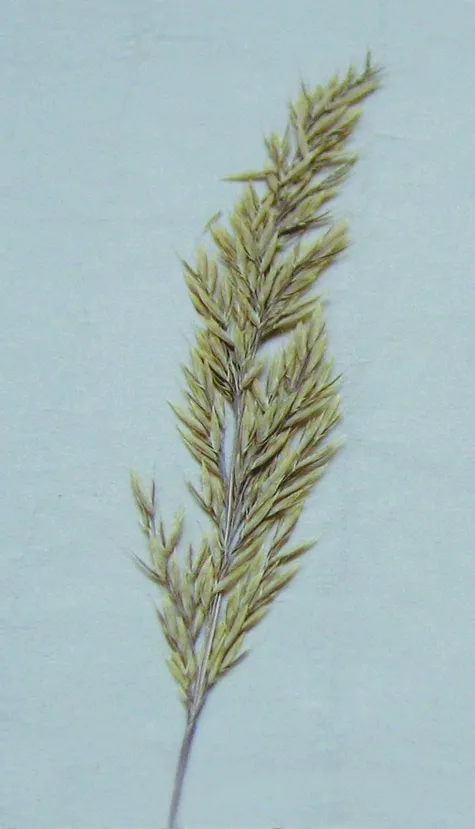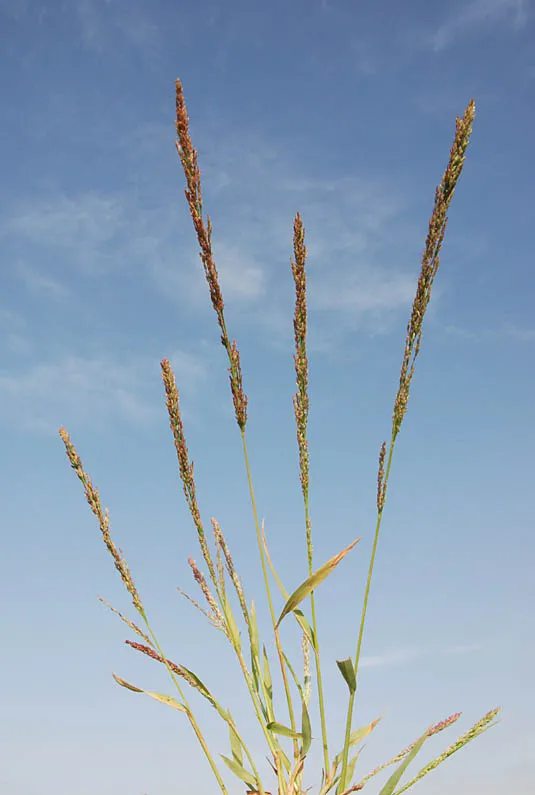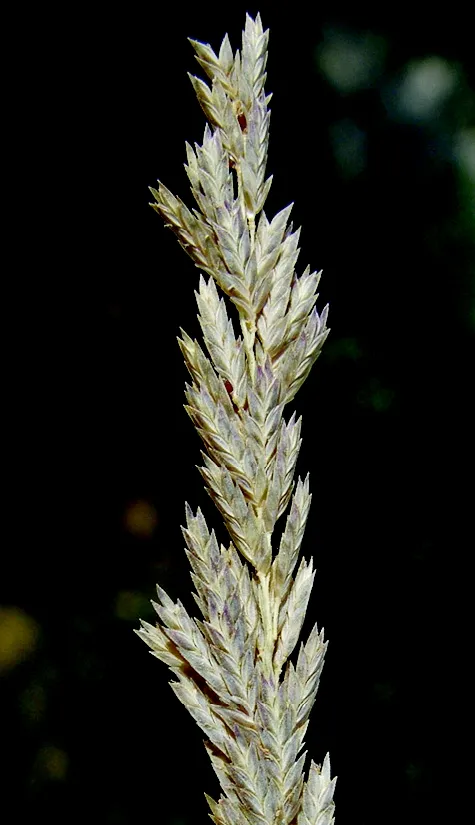Antinoria insularis

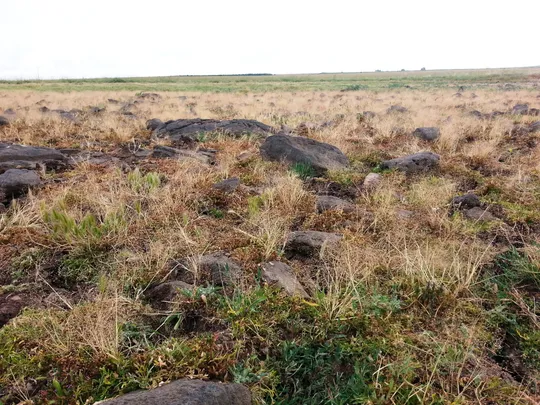
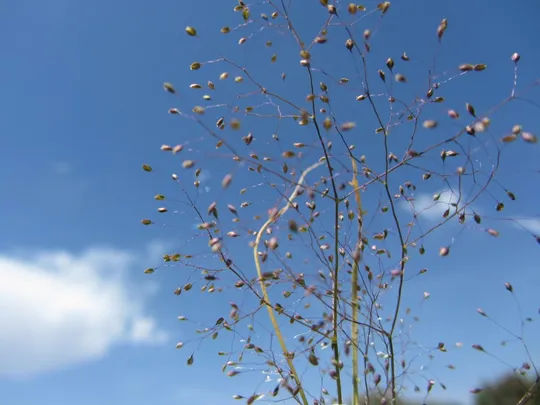
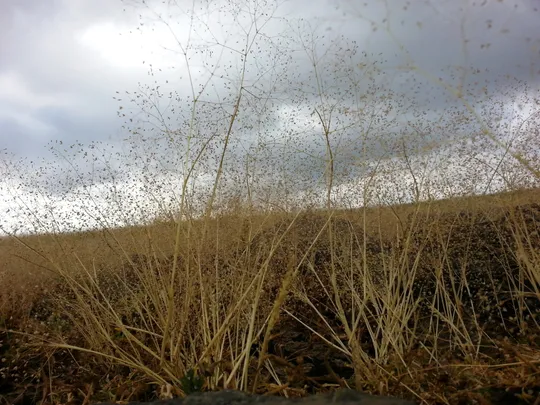
Antinoria insularis is a delicate annual grass, 10-20 cm tall, with a bright, smooth, hairless stem. Its leaves are narrow, long, with a 3-mm papery ligule. Inflorescence is a delicate, sparse panicle, about 10 cm long, with threadlike, scattered and splayed branches. The spikelets are tiny, 1 mm long, and are carried on long threadlike pedicels. Each spikelet has two bisexual flowers – one sessile and the other, the upper one, with a prominent pedicel. Blooming spikelets are bright green-purplish. The glumes resemble a concave boat. The pale is sharp, lacks awns and has three short, blunt lobes at its head. A. glandulosa blooms from April to July (August); flowering period varies according to the rate at which the edges of the puddle or flooded area dries.
Antinoria insularis grows in only two regions – in the Golan and upper
Galilee. In the Galilee, it was collected in 1968 at the Zeved Pond in the
Mount Meron region and in Dalton Heights in 1990-1991. In the Golan, it grows
at Bar'on Pond, Faraǧ Pond, Mesil Asnia, Hushnia Pond, pools in the Keshet-El Rom area and
seasonal pools south of Quneitra. Saul Beckerman reported that in spring 2005,
he observed the species in dozens of puddles at these locations.
Edges of seasonal winter pools in stagnant water on
deep basalt soil, which is occasionally flooded in the winter.
The genus Antinoria has two species that have western Mediterranean distributions. The
genus belongs to the Hordeum tribe in the family Poaceae. The second species in
the genus grows in Spain, Portugal and northwestern France.
A. insularis is morphologically similar to Aira
elegantissima, which is close to it systematically and even
grows in the same habitat. The major difference between them in the field are
the awns on the pales of Aira, which are absent in Antinoria. In addition, the characteristic boat shaped glumes in A. insularis are clearly visible, unlike flat,
elongated glumes in Aira. Zingeria biebersteiniana is also occupies a habitat and forms landscapes very similar to the
previous species. It can be told apart by the single flower on each spike,
instead of two. Zingeria has been found to date only on the Hermon in Israel.
·
Natural water pools in the
Golan and Galilee are intended to provide water for flocks or agriculture. At
the Dalton Heights location, there is heavy grazing pressure by cattle, and the
agricultural areas will probably be expanded. In the Golan, the number of
locations is greater, and the grazing pressure is lower than on the Dalton
Heights, but despite this, A.
insularis has been extinct from the Bar'on Pool since the
1990s, together with additional aquatic plants. The current cattle grazing
pressure is a major threat to the survival of the "red" aquatic
plants in the Golan.
·
The locations are relatively
far from settlements or roads, but the plants grow in open areas and are very
easily accessible.
·
Antinoria insularis usually appears in dense patches
with many plants in a very small area. Population sizes fluctuate extensively
over the years (Saul Beckerman, pers. comm.). During most years, the population
in the Golan is limited to seasonal pools near springs. In the other locations,
the populations come and go. In the Mesil Asnia area, very dense sites of A. insularis were found over an area of
about 3 dunams (3/4 acre). The entire area becomes bright from the spikes
blooming close to the soil surface, and the number of plants is estimated at
one million or more.
·
The Bar'on Pool location in
the Golan and the Zeved Pond in the Galilee are included in nature reserves.
The other locations are not inside nature reserves. The location at Faraǧ Pond is currently in the process of being declared
a nature reserve.
Cattle should be kept out of some of the water
bodies where Antinoria insularis grows. Research should be conducted to
determine how often and during which seasons cattle should be permitted to
enter the water bodies without endangering the plants.
Attempts should be made to reintroduce the species
to the Bar'on Pond.
Antinoria
insularis grows primarily in the western Mediterranean Sea: it
is common in Sardinia, Corsica, Sicily, Italy (limited range), and Crete. Single
locations are found across the eastern Mediterranean Sea Basin in Turkey, Syria
and Israel. Although Greece seems to have appropriate habitats, the species has
not been found there, and was collected in just one location in Turkey in the
20th century, and was recorded from only a single location in Syria
(in the Golan-Quneitra, Muterd 1966).
Antinoria
insularis is a northern annual Poaceae that is limited to
seasonal pools in the Galilee and the Golan. The populations in Israel are located
at the southeastern end of its global distribution, and are disjunct from the
primary distribution area of the species. A.
insularis is endangered because it grows in isolated locations
in a rare habitat and in pools that are under severe cattle grazing pressure.
שמידע, א. ודנין, א. 1980. צמחי החודש. טבע וארץ כ"ג: 1.
Cohen, O. and Shmida, A. 1991. Botanical notes. Israel Land and Nature, Vol. 16, 3:145
Current Occupancy Map
| 1000 squre meter pixel | 5000 squre meter pixel | 10000 squre meter pixel | |
|---|---|---|---|
| number of observations | 0 | 0 | 0 |
| in total pixels | 0 | 0 | 0 |
| Family | Gramineae |
| Classification | On the near threatened species list |
| Ecosystem | Mediterranean humid |
| Chorotype | Western Mediterranean |
| Conservation Site | Mesil Asnia |
| Rarity |
1
2
6
|
|---|---|
| Vulnerability |
0
2
4
|
| Attractiveness |
0
0
4
|
| Endemism |
0
0
4
|
| Red number |
1
2.6
10
|
| Peripherality | N |
| IUCN category | DD EW EX LC CR EN VU NT |
| Threat Definition according to the red book | Near threatened |
 Based on:
Based on:
